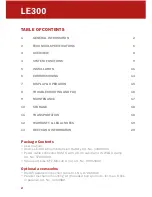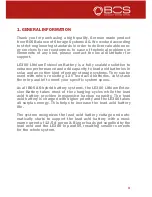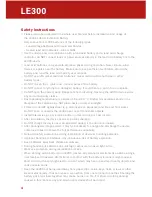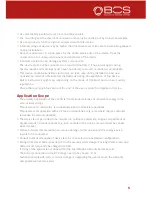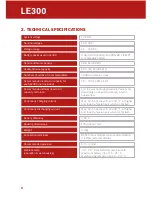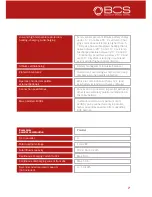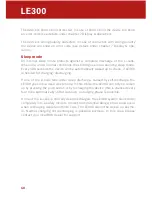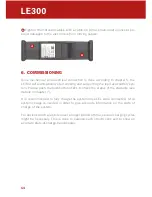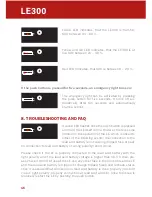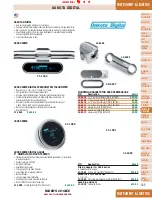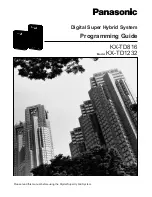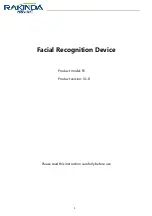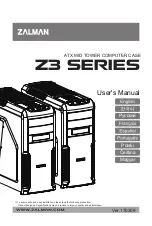
9
4. SYSTEM FUNCTIONS
Charging
The lead acid battery is charged with higher priority. After the lead acid battery is
charged 80% the LE300 starts being charged in parallel. However, it still leaves
sufficient energy for the lead acid battery to be properly fully charged.
The charging current is limited to about 12.5 A per device, for instance 4x LE300
can be charged with up to 50 A.
Discharging
At the beginning of each discharge phase, the LE300 will be discharged first
(given that the LE300 has not been empty). Depending on the load, the LE300
is doing all the work until the LE300 is almost completely discharged. Once the
LE is discharged the lead acid battery will be discharged (if load continuous).
Therefore, in charging & discharging phases the LE300 is supporting the lead
acid battery.
The current is limited to about 12.5 A per device, for instance 4x LE300 can thus
together support the lead acid battery with up to 50 A. Currents higher than the
nominal rated currents of the LEs are supported by both, the LEs and the lead
acid batteries, resulting in smaller C-rates for both batteries
Protection
Due to the intelligent battery management, the LE300 is fully protected against
overload and deep discharge as well as overcurrent, short circuits, wrong polarity
and too high or too low temperatures.
Under cold conditions (<10 °C cell temperature) the integrated heater heats
up the LE300 to operating temperature to avoid damage to the cells during the
charging phase. At cell temperatures below -20 °C no discharge of the device is
possible. At cell temperatures below -5 °C no charge is possible. Once the integ-
rated heater has warmed up the LE300 and the thresholds of -5 °C for charging
and -20 °C for discharging are passed, the LE300 starts charging/discharging.
Full charging and discharging power is available between 5 °C and 40 °C. At cell
temperatures lower than 5 °C and higher than 40 °C the charging and dischar-
ging currents are limited.


